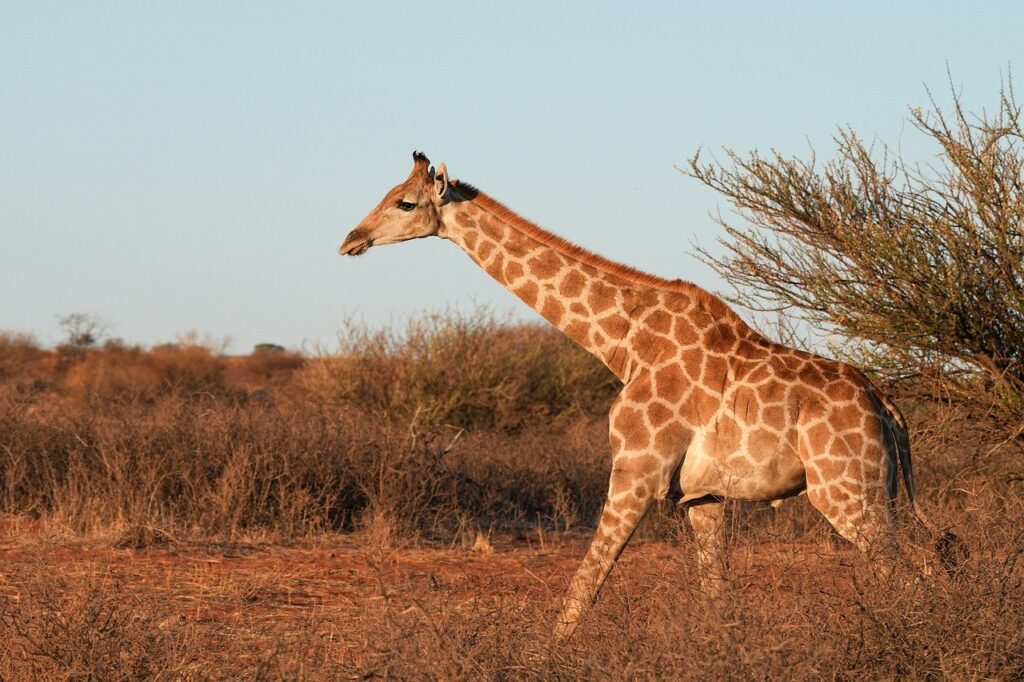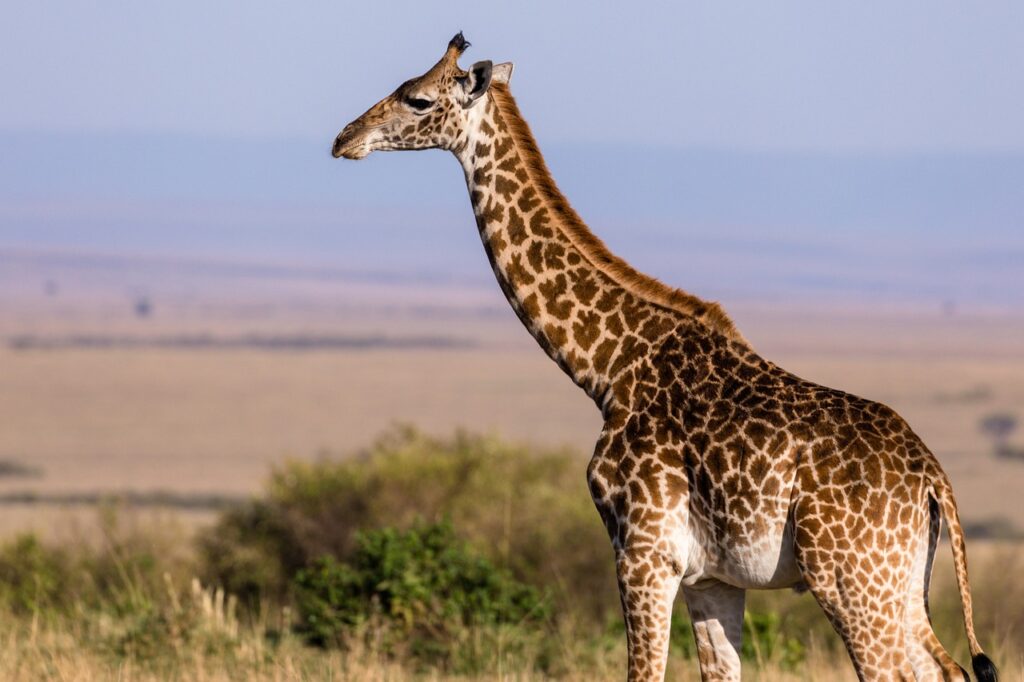Giraffes are one of the most awe-inspiring creatures on the planet. Towering over other animals with their long necks and graceful presence, these gentle giants captivate our imagination. Whether you’re curious about their unique physical traits, their quirky behaviors, or their role in the ecosystem, this guide will delve into everything you need to know about giraffes. Let’s explore their world and uncover why they’re truly one of nature’s wonders.
What Are Giraffes?
Giraffes are herbivorous mammals native to the African savannah. They are the tallest land animals in the world, with males reaching up to 18 feet in height. Their long necks, spotted coats, and calm demeanor make them easily recognizable and beloved by people of all ages.
Giraffes Appearance
Giraffes’ bodies are built for height. Their long necks, which contain only seven vertebrae (the same number as humans!), allow them to reach leaves high up in acacia trees. Their blue tongues, measuring up to 20 inches, help them grasp and strip foliage. Additionally, their patterned coats are unique to each individual, acting like a fingerprint.
How Do You Pronounce Giraffes?
For those wondering, “giraffes pronunciation” is straightforward: juh-RAF.
Giraffes Habitat and Diet
Where Do Giraffes Live?
Giraffes inhabit the grasslands and open woodlands of sub-Saharan Africa. They thrive in areas with abundant acacia trees, their primary food source. Their habitat also includes savannahs and regions near rivers where they can access water during dry seasons.
What Do Giraffes Eat?
Giraffes are herbivores, feeding primarily on leaves, flowers, and fruits from acacia and mimosa trees. Their diet is supplemented by shrubs and grass when necessary. Interestingly, giraffes can go days without drinking water, getting most of their hydration from the plants they consume.

Are Giraffes Endangered?
Giraffes are currently listed as a “vulnerable” species due to habitat loss, poaching, and human-wildlife conflict. Their population has declined by 30% over the past three decades. Conservation efforts are vital to protect these majestic creatures and ensure their survival.
If you’re interested in supporting giraffe conservation, check out this resource on giraffes.
Quirky Giraffe Behaviors
Giraffes Sleeping
Did you know giraffes sleep standing up? They take short naps that last only a few minutes at a time, totaling about 4-5 hours per day. This behavior helps them stay alert for predators.
Giraffes Fighting
Male giraffes engage in a unique behavior called “necking,” where they swing their necks to hit each other with their ossicones (horn-like structures). These battles establish dominance and mating rights.
Giraffes Drinking Water
When drinking water, giraffes must splay their legs awkwardly to reach the ground, making them vulnerable to predators. This is why they often drink in groups, relying on others to keep watch.
Giraffes Mating and Birth
Giraffes have a fascinating mating ritual. Males will often court females by tasting their urine to determine fertility. After a 15-month pregnancy, females give birth standing up, resulting in a newborn giraffe’s dramatic 6-foot drop to the ground. The calves can stand and walk within hours of birth.

Fun Facts About Giraffes
- Giraffes Tongue Colour: Their tongues are dark blue or black to prevent sunburn while feeding.
- Giraffes Blood Pressure: Their hearts are incredibly powerful, pumping blood up to their heads, often against gravity.
- Giraffes and Craftz: These animals inspire countless crafts and educational activities for children, such as “Giraffes Can’t Dance” read-aloud sessions and related games.
- Giraffes Dancing: While they don’t dance in real life, the popular children’s book Giraffes Can’t Dance has made this idea endearing.
Are Giraffes Loving or Heartless Creatures?
Some myths paint giraffes as “heartless creatures,” but nothing could be further from the truth. While they aren’t outwardly affectionate like some animals, giraffes are highly social. They form loose herds and often protect their young from predators. Their calm and observant nature showcases their intelligence and gentle demeanor.
Giraffes in Pop Culture
Books and Media
The beloved book Giraffes Can’t Dance has captured the hearts of children worldwide. From “Giraffes Can’t Dance PDF” versions to “Giraffes Can’t Dance activities,” the story has sparked a love for giraffes in young readers. Its message of resilience and self-confidence resonates universally.
Giraffes in Zoos
Visiting giraffes at the zoo is a fantastic way to learn about their behaviors up close. Many zoos also host interactive feeding sessions where visitors can experience their gentle nature firsthand.
Frequently Asked Questions About Giraffes
Are All Giraffes Friendly?
While giraffes are not domesticated, they are generally non-aggressive and peaceful animals. However, like all wild creatures, they should be treated with respect.
Can Giraffes Be Domesticated?
Due to their size and specific needs, giraffes cannot be domesticated. They thrive best in their natural habitats or in well-maintained reserves.
What Are 10 Facts About Giraffes?
- Giraffes are the tallest land animals.
- Their necks contain only seven vertebrae.
- They can run up to 35 mph over short distances.
- Giraffes are herbivores with a diet rich in acacia leaves.
- Their tongues are up to 20 inches long.
- Giraffes’ spots are unique to each individual.
- They sleep only a few hours per day.
- Giraffes communicate through subtle body movements and infrasonic sounds.
- A giraffe’s heart can weigh up to 25 pounds.
- They are vital to their ecosystem, helping to shape vegetation and provide food for smaller animals

Are Giraffes Loving?
While they aren’t openly affectionate, giraffes form strong bonds with their calves and herd members, showcasing a quiet kind of love.
Why Giraffes Are Fabulous Creatures
Giraffes’ towering beauty and unique adaptations make them fabulous in every sense of the word. From their elegant strides to their essential role in maintaining ecological balance, these animals remind us of nature’s brilliance. Their continued survival depends on our efforts to protect their habitats and reduce human impact on their populations.
If you’re inspired to learn more about giraffes or contribute to their conservation, explore giraffes.
Conclusion
Giraffes are much more than just the tallest animals on Earth. Their fascinating adaptations, behaviors, and gentle nature make them a cornerstone of the African ecosystem and a source of inspiration for humans worldwide. By understanding and appreciating giraffes, we can play a role in ensuring their survival for generations to come. Whether you’re captivated by their unique appearance or curious about their quirky habits, giraffes truly are one of nature’s most remarkable creations.
